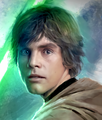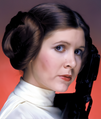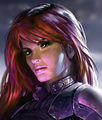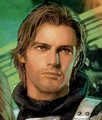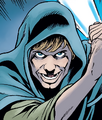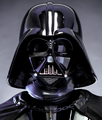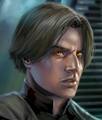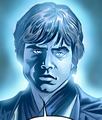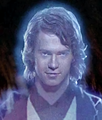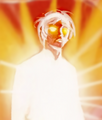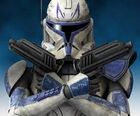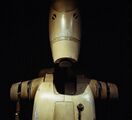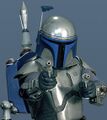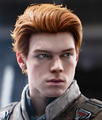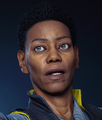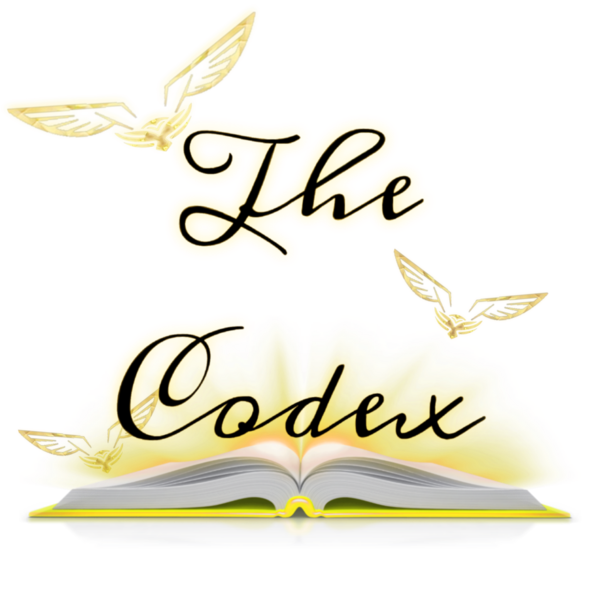The George Lucas Canon strictly goes by the feats within the Hexalogy (Episode I-VI), for non-force users it's relatively similar to many the scalings from the other canons but the level for the force users is significantly more limited than the other's, as on average for even most Jedi masters it's around Wall level from Darth Maul's force usage in moving an object and small building level + by higher tier force users from Yoda stopping large objects from falling onto Anakin and Obi-Wan and Sidious throwing Senate Pods at Yoda. The Speed fights aren't classified to be anywhere near lightspeed with the reaction from the force users being at usual Subsonic.
The official discord link if you wish to join the discord: https://discord.gg/j5RKwCvAFu
Support the wiki on our official Ko-Fi page or Patreon page!
Star Wars: Difference between revisions
m |
m |
||
| Line 57: | Line 57: | ||
*'''[https://thecodex.wiki/Category:Star_Wars_(P-Canon) P-Canon]:''' Prototype canon. These are stories from early draft, conceptualized or unpublished versions of Star Wars, that is made by the employers with its IP, with George Lucas's early drafts for Star Wars Episode IV: A New Hope being prime examples of this named as [https://starwars.fandom.com/wiki/The_Star_Wars The Star Wars]. These also include early concepts of stories for comics, novels and games during the writing process. It should be noted that this canon isn't singular, due to having multiple stories that exist as its own prototype for the official story to be established. | *'''[https://thecodex.wiki/Category:Star_Wars_(P-Canon) P-Canon]:''' Prototype canon. These are stories from early draft, conceptualized or unpublished versions of Star Wars, that is made by the employers with its IP, with George Lucas's early drafts for Star Wars Episode IV: A New Hope being prime examples of this named as [https://starwars.fandom.com/wiki/The_Star_Wars The Star Wars]. These also include early concepts of stories for comics, novels and games during the writing process. It should be noted that this canon isn't singular, due to having multiple stories that exist as its own prototype for the official story to be established. | ||
==Terms== | ==Terms== | ||
<br> | |||
*'''The Force:''' The Force, early known as the Power of Cosmos by the Kwa, was a metaphysical, spiritual, binding, and ubiquitous power that held enormous importance for both the Jedi and Sith monastic orders. Known as the Way in ancient times, the Force was viewed in many different aspects, including, but not limited to, the Light side of the Force, the Dark side of the Force, the Living Force, the Unifying Force, the Cosmic Force and the Physical Force. The first two aspects were concerned with the moral compass of the Force, as manifested by the conduct and emotions of living creatures who were themselves part of the fabric of the Force. The light side of the Force was the facet aligned with compassion, selflessness, self-knowledge and enlightenment, healing, mercy and benevolence, while the dark side of the Force was the element aligned with hatred, fear, covetousness, anger, aggression, jealousy and malevolence. The latter four aspects were defined by prominent Jedi philosophies: The Living Force dealt with the energy of living things; the Unifying Force, with the entirety of space and time; the Cosmic Force, with life after death; and the Physical Force, with anything within one's surroundings. Though the Force was categorized in this way, there were no specific abilities or powers that were only usable by a follower of a particular path of the Force; the Force partially existed inside the life forms that used it, and drew energy from their emotions. Some beings, particularly the Sith, believed that the dark side of the Force was more powerful than the light, though it was possible that the dark side was just more tempting to those who used it (or desired to use it). Others thought of the Force as an entity capable of intelligent thought, almost as a sort of deity. Anakin Skywalker, who was believed to have been conceived by the Force itself, may have shared this belief; if this was indeed the case, it would add credence towards the view of the Force as a sentient entity. Though the Force was thought to flow through every living thing, its power could only be harnessed by beings described as "Force-sensitive." This Force-sensitivity was correlated with, and sometimes attributed to, a high count of internal microorganisms called midi-chlorians that were found in a Force-sensitive's blood: the higher the count, the greater the being's potential Force ability, though there were some exceptions to this rule. Force-sensitive beings were able to tap into the Force to perform acts of great skill and agility as well as control and shape the world around them. Sometimes this ability was described as having a strong Force "aura". | *'''The Force:''' The Force, early known as the Power of Cosmos by the Kwa, was a metaphysical, spiritual, binding, and ubiquitous power that held enormous importance for both the Jedi and Sith monastic orders. Known as the Way in ancient times, the Force was viewed in many different aspects, including, but not limited to, the Light side of the Force, the Dark side of the Force, the Living Force, the Unifying Force, the Cosmic Force and the Physical Force. The first two aspects were concerned with the moral compass of the Force, as manifested by the conduct and emotions of living creatures who were themselves part of the fabric of the Force. The light side of the Force was the facet aligned with compassion, selflessness, self-knowledge and enlightenment, healing, mercy and benevolence, while the dark side of the Force was the element aligned with hatred, fear, covetousness, anger, aggression, jealousy and malevolence. The latter four aspects were defined by prominent Jedi philosophies: The Living Force dealt with the energy of living things; the Unifying Force, with the entirety of space and time; the Cosmic Force, with life after death; and the Physical Force, with anything within one's surroundings. Though the Force was categorized in this way, there were no specific abilities or powers that were only usable by a follower of a particular path of the Force; the Force partially existed inside the life forms that used it, and drew energy from their emotions. Some beings, particularly the Sith, believed that the dark side of the Force was more powerful than the light, though it was possible that the dark side was just more tempting to those who used it (or desired to use it). Others thought of the Force as an entity capable of intelligent thought, almost as a sort of deity. Anakin Skywalker, who was believed to have been conceived by the Force itself, may have shared this belief; if this was indeed the case, it would add credence towards the view of the Force as a sentient entity. Though the Force was thought to flow through every living thing, its power could only be harnessed by beings described as "Force-sensitive." This Force-sensitivity was correlated with, and sometimes attributed to, a high count of internal microorganisms called midi-chlorians that were found in a Force-sensitive's blood: the higher the count, the greater the being's potential Force ability, though there were some exceptions to this rule. Force-sensitive beings were able to tap into the Force to perform acts of great skill and agility as well as control and shape the world around them. Sometimes this ability was described as having a strong Force "aura". | ||
**'''The Four Aspects of the Force:''' | **'''The Four Aspects of the Force:''' | ||
| Line 65: | Line 66: | ||
==Knowledgeable Members== | ==Knowledgeable Members== | ||
<br> | |||
*[[User:SuperSaiyan2Link|SuperSaiyan2Link]] | *[[User:SuperSaiyan2Link|SuperSaiyan2Link]] | ||
*[[User:GiverOfThePeace|GiverOfThePeace]] | *[[User:GiverOfThePeace|GiverOfThePeace]] | ||
Revision as of 06:25, 11 January 2024
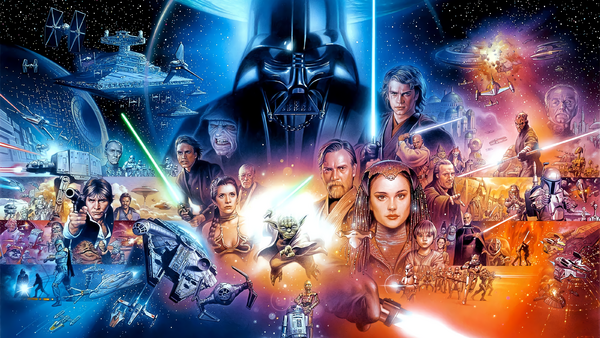
Many of the in-depth details used are from the Wookieepedia, the Star Wars Wiki.
Background
Star Wars is an American epic space-opera media franchise created by George Lucas, which began with the eponymous 1977 film and quickly became a worldwide pop-culture phenomenon. The franchise has been expanded into various films and other media, including television series, video games, novels, comic books, theme park attractions, and themed areas, comprising an all-encompassing fictional universe. The franchise holds a Guinness World Records title for the "Most successful film merchandising franchise".
The original film, retroactively subtitled Episode IV: A New Hope, was followed by the sequels Episode V: The Empire Strikes Back (1980) and Episode VI: Return of the Jedi (1983), forming the original Star Wars trilogy. A prequel trilogy was later released, consisting of Episode I: The Phantom Menace (1999), Episode II: Attack of the Clones (2002), and Episode III: Revenge of the Sith (2005).
Star Wars Legends, formerly known as the Expanded Universe (abbreviated EU), encompasses every one of the licensed, fictional background stories of the Star Wars universe, outside of the original six Star Wars films produced by George Lucas and certain other material such as Star Wars: The Clone Wars, created before April 25, 2014. It is derived from and includes most official Star Wars books, comic books, video games, spin-off films, television series, toys, and other media created before that date. This material expands and continues the stories told in the films, taking place anywhere from over 36,000 years before The Phantom Menace to 136 years after Return of the Jedi. The issue of which aspects are canon was one of the most hotly debated topics among fans.
On April 25, 2014, Lucasfilm Ltd. announced that in preparation for the upcoming sequel trilogy, the Expanded Universe would be retconned; past tales of the Expanded Universe will be printed under the Star Wars Legends banner, and a new continuity has been established that consists only of the original six films, the Star Wars: The Clone Wars television series and film, and all future material from that point onward. Though past elements of the Expanded Universe have been declared non-canon as a whole, they remain a resource for future Star Wars material to reference, thus bringing these elements into the new continuity as canon. Today, the only Legends product that is still being released is the video game Star Wars: The Old Republic, along with short stories published at the Star Wars blog.
The Expanded Universe had a continuity with a few wrinkles. The general rule was that nothing in the Expanded Universe was allowed to contradict any other part of the Expanded Universe or the films. The films, however, do slightly contradict the Expanded Universe on occasion, and retcons were created in the Expanded Universe to fix these contradictions. In the absence of such ad hoc solutions, the EU is considered incorrect only on the particular points of contradiction.
The Expanded Universe is actually older than the films themselves, as the novelization of the original film was published six months before the film was released. In in-universe chronology, the earliest works are the Dawn of the Jedi comics, which are set millennia before the films, while the latest are the Legacy comics, which are set about one hundred and thirty years after Return of the Jedi.
The Expanded Universe was intended to be a continuation, and an expansion, on the six Star Wars theatrical films produced by George Lucas from 1977 to 2005. All EU material, combined with that presented in the films, was meant to function as a complete story. However, in order to allow this story to function as a whole, it was kept in an order of continuity. Lucasfilm held this of such high importance that a team's sole job at Lucasfilm was maintaining continuity between Lucas's films and the EU, which was created by many other authors and artists, many times out of order, and with many different ideas. Though it eventually was erased from main in 2012, when Disney acquired the rights to the Star Wars franchise; and as such split the continuities in twine.
The subsequently-produced sequel trilogy consists of Episode VII: The Force Awakens (2015), Episode VIII: The Last Jedi (2017), and Episode IX: The Rise of Skywalker (2019). Together, the three trilogies form what has been referred to as the "Skywalker saga". All nine films were nominated for Academy Awards (with wins going to the first two released) and were commercially successful. Together with the theatrical spin-off films Rogue One (2016) and Solo: A Star Wars Story (2018), the combined box office revenue of the films equates to over US$10 billion, and it is currently the second-highest-grossing film franchise.
Chronologically, the story begins with Anakin Skywalker, the Chosen One of Jedi prophecy, as the prequel trilogy charts his rise as a Jedi Knight through his fall to the dark side of the Force and becoming Darth Vader. The original trilogy tells the story of Anakin's children, Luke Skywalker and Leia Organa, as they lead the fight against the Galactic Empire and as Luke saves Anakin from the dark side and becomes a Jedi in his own right. The sequel trilogy focuses on Rey, a Force prodigy of unknown lineage who is swept up into a new galactic conflict and faces off against Anakin's fallen grandson, Kylo Ren, while becoming the first of a new generation of Jedi. </tabber>
Power of the Verse
The Continuity Canon more often the focus is on Force-User characters, specifically those who are Jedi or Sith. With broken abilities such as high level telepathy capable of dominating entire planetary populations, draining worlds, extremely fine level precision use of telekinesis as well as other esoteric powers, Force-Users are formidable opponents.
An upper-mid tier Jedi Master such as Obi-Wan Kenobi at his prime has no difficulty moving and reacting when augmented by the Force and his own perceptions, performing reactionary feats and attack speeds against entire armies to pull off up to mach 4000-16,000 speeds and move his lightsaber so fast it appears like he created a literal spherical force field around himself.
Even weaker Jedi Knights precognition works beyond their own understanding and can adapt against lightspeed attacks.
This is thanks to a bevy line-up of ridiculously powerful telepaths, beings who can wipe out entire worlds, technology great enough to manufacture planet razing self-adapting and evolving city size automated factories to small starships capable of wiping out entire star systems, and beings who have mastered technology and mystical powers like the Celestials who have seemingly become omniscient and went onto a higher realm or plane of existence.Disney Canon feats are more grounded to the limitations of G-Canon, in not having feats for Jedi and Sith Master force users to conjure up magnitudes in affecting planets and further higher with its cosmology, the feats are generally ranged around to usually building level that acquires concentration. The lifting strength and speed feats are similar to those from C-Canon, and non-force users share similar scalings to the other continuity as well.
Canon
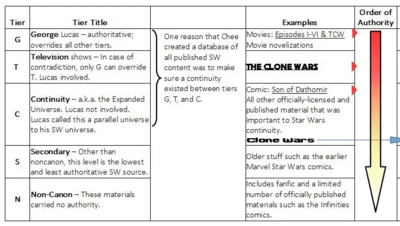
- G-Canon: George Lucas canon. This is the canon of the series that overrides all other tiers of canon, with the exception of Orwellian retcons such as Han Shot First, it cannot be contradicted or retconned by any other form of canon. The media featured in G-Canon would be the original six films, Star Wars: Episode I - Episode VI, as well as their novelizations.
- T-Canon: Television show canon. This is the canon of the series second only to G-Canon, which can only be overridden by it. George Lucas is directly involved in this tier of canon, and thus it is most closely tied to his original works. This includes only the television show, The Clone Wars (2008)
- C-Canon: Continuity canon, or Extended Universe (Legends) canon. This is the canon of the series below the projects worked on by George Lucas, and has thus been stated by him to have taken place in an alternate, parallel universe. This covers all content written as continuations of the original story without Lucas involved, such as Dark Empire, the Thrawn Trilogy, and some video games, such as The Force Unleashed. It also notably includes the television shorts, Clone Wars (2003)
- S-Canon: Secondary canon. This canon is, aside from the non-canon material, the least authoritative pieces of material that cannot override or retcon anything above it. This includes much of the older non-Lucas content, such as the Marvel Star Wars comics.
- N-Canon: Non-Canon. This is all material that holds no authority in the series whatsoever, usually being spin-offs, adaptations, or what-if series. This content contains a wide variety of material, from the LEGO games, to toys, to what-if endings in video games, to the Infinities comics. It also is said to include fanfiction, which shows how low of a canon this is.
- D-Canon: Disney canon. This is all material created after Disney's acquisition of Lucasfilm and the Star Wars brand in 2012, where the company stripped all other material from their canon and built things from the ground-up. This contains all material made after 2012, such as the Star Wars: Episode VII - IX, the Star Wars Story films, the newer Star Wars video games, as well as some television shows like Kenobi, The Mandalorian, and The Book of Boba Fett.
- P-Canon: Prototype canon. These are stories from early draft, conceptualized or unpublished versions of Star Wars, that is made by the employers with its IP, with George Lucas's early drafts for Star Wars Episode IV: A New Hope being prime examples of this named as The Star Wars. These also include early concepts of stories for comics, novels and games during the writing process. It should be noted that this canon isn't singular, due to having multiple stories that exist as its own prototype for the official story to be established.
Terms
- The Force: The Force, early known as the Power of Cosmos by the Kwa, was a metaphysical, spiritual, binding, and ubiquitous power that held enormous importance for both the Jedi and Sith monastic orders. Known as the Way in ancient times, the Force was viewed in many different aspects, including, but not limited to, the Light side of the Force, the Dark side of the Force, the Living Force, the Unifying Force, the Cosmic Force and the Physical Force. The first two aspects were concerned with the moral compass of the Force, as manifested by the conduct and emotions of living creatures who were themselves part of the fabric of the Force. The light side of the Force was the facet aligned with compassion, selflessness, self-knowledge and enlightenment, healing, mercy and benevolence, while the dark side of the Force was the element aligned with hatred, fear, covetousness, anger, aggression, jealousy and malevolence. The latter four aspects were defined by prominent Jedi philosophies: The Living Force dealt with the energy of living things; the Unifying Force, with the entirety of space and time; the Cosmic Force, with life after death; and the Physical Force, with anything within one's surroundings. Though the Force was categorized in this way, there were no specific abilities or powers that were only usable by a follower of a particular path of the Force; the Force partially existed inside the life forms that used it, and drew energy from their emotions. Some beings, particularly the Sith, believed that the dark side of the Force was more powerful than the light, though it was possible that the dark side was just more tempting to those who used it (or desired to use it). Others thought of the Force as an entity capable of intelligent thought, almost as a sort of deity. Anakin Skywalker, who was believed to have been conceived by the Force itself, may have shared this belief; if this was indeed the case, it would add credence towards the view of the Force as a sentient entity. Though the Force was thought to flow through every living thing, its power could only be harnessed by beings described as "Force-sensitive." This Force-sensitivity was correlated with, and sometimes attributed to, a high count of internal microorganisms called midi-chlorians that were found in a Force-sensitive's blood: the higher the count, the greater the being's potential Force ability, though there were some exceptions to this rule. Force-sensitive beings were able to tap into the Force to perform acts of great skill and agility as well as control and shape the world around them. Sometimes this ability was described as having a strong Force "aura".
- The Four Aspects of the Force:
- The Living Force: The Living Force was a view on the Force, accepted by the minority of Jedi throughout ages, the Living Force was thought to be present in most living beings, surrounding and penetrating them, thus making all living things connected by it. The Jedi believed the Living Force relied on their instincts and were attuned to other living beings around them, they were mindful of the future and the possible consequences of their actions, but remained focused on the present. The Living Force was viewed as having both the light and the dark side, the Jedi always had to be mindful of their actions to avoid the temptations of the dark side. Through following the Living Force, several Jedi were able to retain their identities after their physical death, becoming one with the Force and able to manifest themselves as Force ghosts. Proponents of the Living Force view, such as Qui-Gon Jinn, espoused a philosophy of "living in the moment", relied heavily on their instincts and concentrated more on sensitivity to living things, rather than fulfilling destiny, which was one of the main tenets of the Unifying Force philosophy.
- Unifying Force: The Unifying Force was a view of the Force, accepted by a minority of Jedi throughout ages, the Unifying Force was thought to be present in all shining stars, surrounding and penetrating them, thus making all universal things connected by it. The Jedi believed the Unifying Force relied on their understanding and were attuned to space around them. The Unifying Force was believed as having neither the light nor the dark side. The light and dark sides are instead conceptualized in a metaphorical way, treating all beings equally. Followers of the Unifying Force always kept their eyes open for future possibilities. In the end, it resulted in them trying to fulfill a destiny rather than focusing on here and now, which was one of the main tenets of the Living Force philosophy. Visions of the future were of particular significance to Unifying Force supporters. Yoda was one of the most adamant proponents of heeding visions of the future, though he did not adhere to many of the other views common with the Unifying Force. Many of these Jedi believed a similar philosophy focusing on the flow of time as a whole, ignoring primary use of the Living Force. Voices for the latter espoused a philosophy of "live for the moment" and heavily relied on their instincts. This viewpoint might have allowed the Jedi Order to stave off the conflict that gave rise to the Galactic Empire, as its members lost themselves in looking forward rather than analyzing the unfolding events before them. Yoda later espoused beliefs closer to the philosophy of the Living Force when training Luke Skywalker on Dagobah. Ironically, Emperor Palpatine, known as Darth Sidious, also supported this belief in the Unifying Force. He agreed that there was only one Force: the only difference worthy of note was that the Sith saw the Force as a means to an end while the Jedi saw it as an end in itself. This view was also supported by Vergere, who taught Jacen Solo that there was no light side or dark side of the Force—only the Unifying Force. Vergere also told Solo that "the Force was everything, and everything was the Force;" that the Force did not have sides and never took sides. However, the Sith Lord Darth Plagueis disagreed with this belief. His own studies of the Force had indicated to him that there was a clear and obvious distinction between the light and dark sides. Lord Kaan used the term "twilight" to describe an idea that the Force was not split into light and dark sides during a portion of the Ruusan campaign.
- Cosmic Force: The Cosmic Force, also known as the greater Force, was an aspect of the Force, described by the wisest of Jedi Masters as a "unifying gestalt". Through the Living Force, it made possible the phenomenon of Force ghosts.
- Physical Force: The Physical Force was a facet of the Force that allowed Force-sensitives to manipulate the objects in their surroundings. The Physical Force was similar to the Living Force and Unifying Force, as well as how Jedi were connected to other living beings surrounding them, and throughout the galaxy.
- The Four Aspects of the Force:
Knowledgeable Members
Characters
Jedi Order
-
Anakin Skywalker
-
Obi-Wan Kenobi
-
Mace Windu
-
Kit Fisto
-
Luke Skywalker
-
Leia Organa Solo
-
Mara Jade Skywalker
-
Jacen Solo
Dark Jedi
-
Luuke Skywalker
Sith Order
-
Darth Vader
-
Darth Caedus
Force Entities
-
Force Ghost Luke
-
Force Ghost Anakin
-
Force Oneness Jacen
-
The Daughter of Mortis
-
The Son of Mortis
Galactic Republic
-
Padmé Amidala
Clones
-
Captain Rex
Trade Federation of Planets
Droids
-
B1 Battle Droids
Bounty Hunters
-
Jango Fett
-
Boba Fett
Republic Era Jedi Order
-
Cal Kestis
-
Cere Junda
Force Entities
-
The Daughter of Mortis
-
The Son of Mortis
Rebel Alliance
-
Rey Palpatine
Trade Federation
Droids
-
B1 Battle Droids
Other
-
Padmé Amidala




